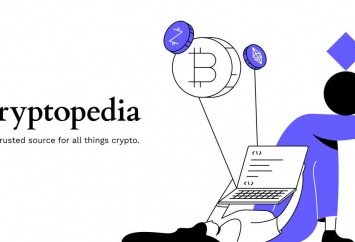A mathematician took Ethereum and tried to make it better. Cardano is a proof of stake cryptocurrency developed by co-founder of Ethereum, Charles Hoskinson. Hoskinson saw that the three main problems of cryptocurrencies were scalability, interoperability and sustainability.
Scalability
If you’re a fan of Bitcoin or Ethereum, you know all too well that they struggle with scalability. Bitcoin is only able to process around 5 transactions per second and Ethereum, 15. This is nothing compared to the likes of VISA, which can process some 30,000 per second. This is due to the proof of work mechanism (PoW) used to verify transactions. Hoskinson believes for cryptocurrencies to succeed, they must speed up as more users enter. They need to scale linearly with their users.
Cardano uses a different method of validating called proof of stake (PoS). Specifically, Cardano implements something called “epochs”. This basically divides up who can validate particular blocks at a specific part of a blockchain. Instead of everyone having the ability to validate a block, a particular validator is selected, removing the crowding and competition that occurs with PoW on Bitcoin. The cool thing about Cardano is that as more users enter, the slot can be broken down even further.
Interoperability
Interoperability is the ability of different things to operate with one another. Think of a universal charger that works with a variety of devices. This is peak interoperability. The opposite would be a company that makes devices dependent on another device. Imagine the only way to charge your iPhone was with an official Apple charger. Good for Apple, bad for your bank account. This reduces competition, risks the formation of a monopoly and costs users a lot more.
Acknowledging and accepting interoperability as being the future of crypto is a key insight that Hoskinson and the team highlight. They want Cardano users to be able to interact with other blockchains seamlessly.
Introducing the KMZ sidechains protocol
Despite its fancy name, it’s simply Cardano’s way of effortlessly bridging Cardano with other cryptocurrencies on other blockchains. This is the crypto version of exchanging your Pounds for Euros and Dollars.
Sustainability
We’re not talking about environmental sustainability issues here, although that is a fascinating topic we intend to cover shortly. We’re talking about the guarantee a network can keep its lights on. If we’re investing in a project, we want a guarantee the network will stay afloat, innovate and adapt through change.
Cardano handles this by use of a treasury. The treasury collects fees from users and then pays contributors for their efforts in maintenance and innovation. Simply put, a self-sustainable cryptocurrency.
What does Cardano do?
Although Cardano was launched in an ICO back in 2017 (a notorious time for scams in the crypto world), the project has proven itself by rigorously testing itself, forming partnerships with prestigious universities and even partnering with the country of Georgia on an ID verification system.
Cardano’s roadmap is broken down into 5 stages; Foundation, Decentralisation, Smart Contracts, Scaling, Governance. Check the roadmap here.
It’s also key to note that Cardano offers very similar services to Ethereum, such as smart contract viability, the foundation for decentralised apps, NFT exchange and more. However, it’s fair to say Cardano isn’t as far along as Ethereum, indicated by its smaller market cap.
Keynote, ADA is the ticker symbol and token used for Cardano in the same way Ether is the token, and ETH is the ticker symbol for Ethereum.
How is Cardano different from Ethereum?
As already mentioned, Cardano’s creator, Hoskinson, was a co-founder of Ethereum. However, due to disagreements regarding how Ethereum would be run, Hoskinson moved on and began work on Cardano. The main issue was that Vitalik Buterin (Ethereum’s creator) insisted on Ethereum being a non-profit venture, while Charles Hoskinson wanted it to be a for-profit entity.
Both Ethereum and Cardano are smart contract based platforms, however, there are considerable differences.
- Cardano has been using PoS since its inception. Ethereum is looking to bridge over from PoW to PoS in 2022.
- Cardano has a TPS (transactions per second) of 257 vs Ethereum’s 15.
- Cardano is deflationary, which means it has a fixed amount (45 billion), whereas Ethereum plans to introduce more tokens every year.
Hoskinson
As a closing thought, we must address the elephant in the room: one of the most significant issues people have with Cardano is its creator. There is no doubt Charles Hoskinson is a brilliant individual, however, there has been a pattern of delayed promises. What is this down to? Is this expected with a revolutionary product, or does it shed light on dysfunction within the team?
Also, with Ethereum 2.0 on the horizon, will Hoskinson’s old friend be the one to solve the plaguing scalability issues first. If so, how would Ethereum’s success affect Cardano? Are they rivals, or just very similar projects independent of one another?



